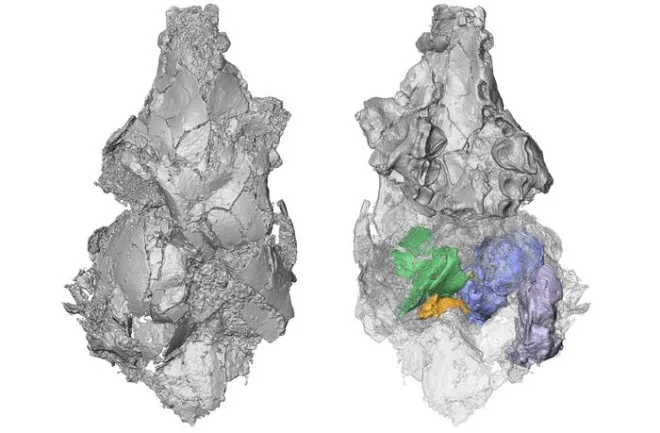Summary
On January 10, a study published in the Biology Letters of the Royal Society unveiled that picrodontids an extinct group of placental mammals that thrived millions of years post-dinosaur extinction, diverged from the prior assumption of being primates.

Debate solved through Picrodontid Skull Fossil Discovery
The paper, co-authored by Anthropology PhD candidate Jordan Crowell, Associate Professor Stephen Chester, and Mammals Curator John Wible, resolves a paleontological debate over a century. For 50 years, palaeontologists considered picrodontids, mouse-sized creatures with a diet likely including fruit and nectar, as primates based on shared dental features. The study challenges this belief.
Revolutionizing Primate Evolution Understanding
Utilizing modern CT scan technology, the researchers reexamined the only preserved picrodontid skull in Brooklyn College’s Mammalian Evolutionary Morphology Laboratory. The team, led by Jordan Crowell and senior author Stephen Chester, concludes that picrodontids are not closely related to primates, suggesting independent evolution of dental similarities for similar diets.
Implications of Independent Evolution
The findings indicate that picrodontids and primates evolved dental similarities independently, emphasizing the importance of revisiting old specimens with updated techniques. The study sheds light on the challenges posed by the hidden cranial anatomy of the Zanycteris paleocenus skull, initially classified as a primate in 1968.
Also Read:Male southern elephant seals eats selectively – Know More (kmore.info)
Advancements in Paleontological Techniques
Professor Emeritus Frederick Szalay’s 1968 classification of picrodontids as primates was based on fossilized teeth, notably the Zanycteris paleocenus skull. The team’s use of micro-CT scanning, a revolutionary technique, revealed hidden cranial anatomy and challenged the earlier classification.
Micro-CT Scanning’s Impact on Paleontology
The discussion highlights the transformative impact of micro-CT scanning on palaeontology, enabling researchers to glean new insights from previously studied fossils. The team’s examination of the Zanycteris paleocenus skull, prepared in 1917, underscores the hidden details uncovered by modern technology over the last century.
Journal Link: https://royalsocietypublishing.org/doi/10.1098/rsbl.2023.0335

I love your wp format, where did you get a hold of it?
i am using free theme from wordpress.